Politics through the Lens of Economics
Lesson 11: Term Limits and Media Freedom
Masayuki Kudamatsu
13 December, 2017
Discussion Time (Aim to be wrong!)
What evidence is needed
for the Political Agency Model to explain
Pro-natal policies in France

Fertility rate (births per woman)
for G7 countries over time
Background information
Fertility rate in France is among the highest in rich countries
Image source: Eurostat (2017)
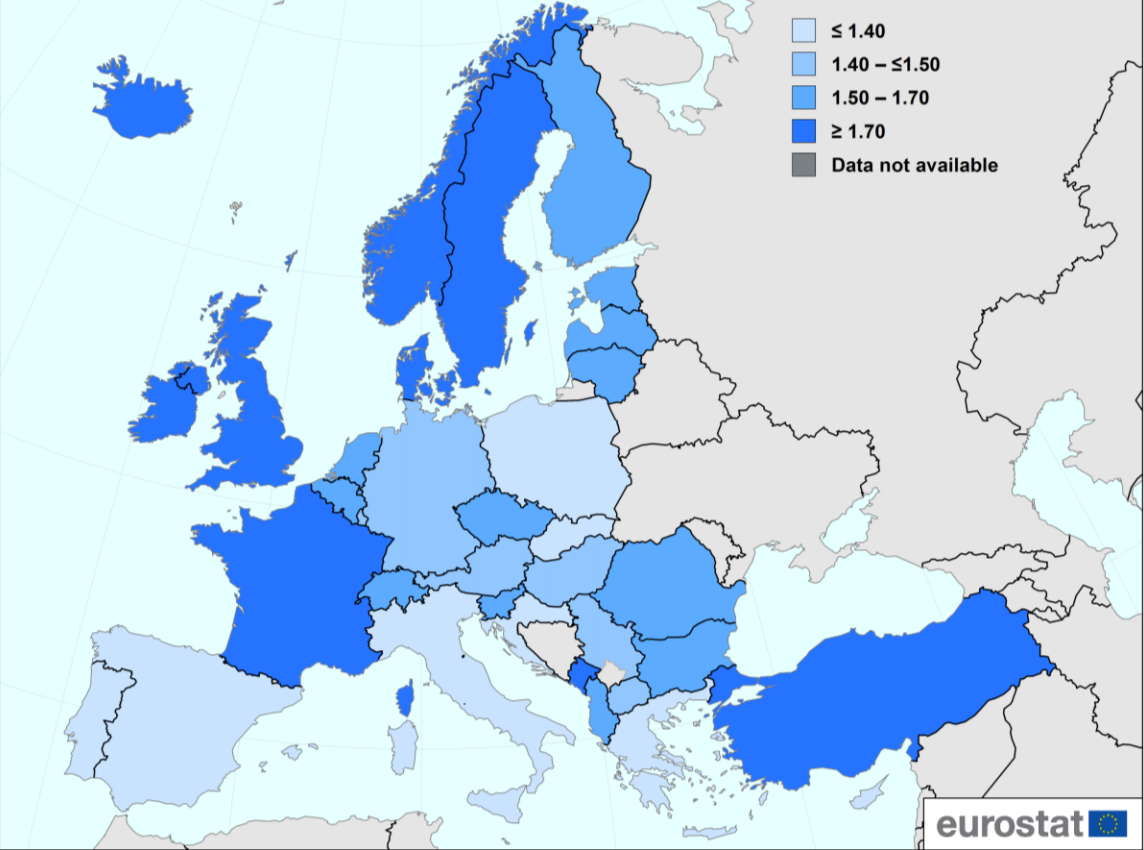
Fertility rate across Europe in 2015
Background information
Fertility rate in France is among the highest in rich countries
Background information
Pro-natal policies in France
Source: The Cut (2016), Quartz (2017)
Paid maternity leave
Mothers get their full salary for 16 weeks of maternity leave, and 26 weeks if it’s her third child
Job guarantees (a mother can return to the job after her leave)
Subsidized daycare
Discussion Time (Aim to be wrong!)
What evidence is needed
for the Political Agency Model to explain
Pro-natal policies in France


Today's Road Map
Impact of Term Limits - Theory
Impact of Media Freedom
Impact of Term Limits - Evidence
Term limits in Japan
No term limit for any political offices in Japan
Term limit for LDP President is de facto non-binding
as most presidents resign within 2 years (Wikipedia)
cf.
Argument against term limits in Japan: "Unconstitutional"
"the inalienable right to choose their public officials and to dismiss them"
Article 15
Article 22
Freedom of occupation
Motivation:
Term limits across the world
US: Term limit for President and two-thirds of State Governors
Latin America and Africa
Term limits for presidents were introduced when democratized
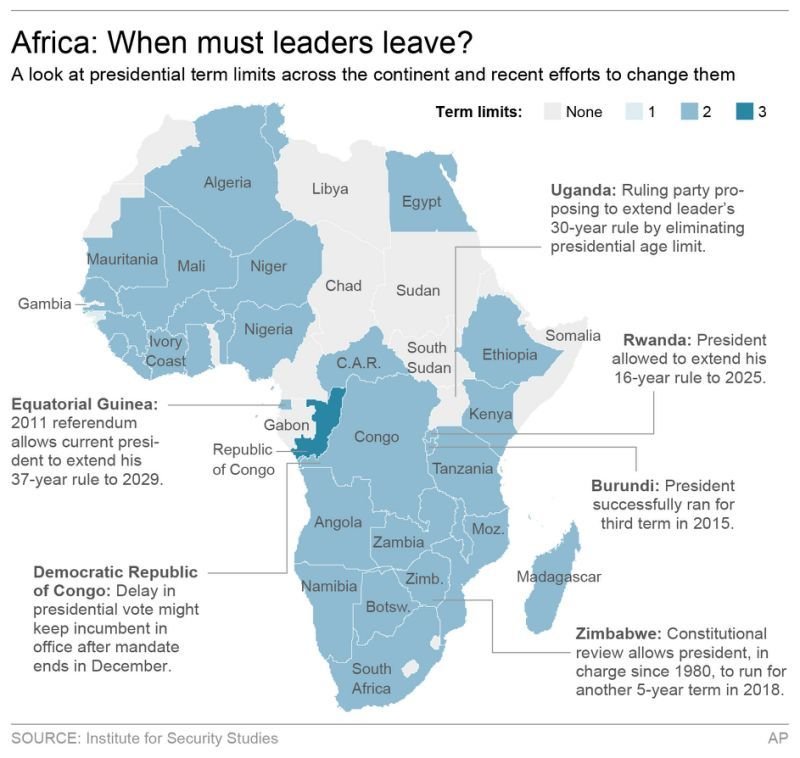
cf. China:
de facto term limit (10 years)
Motivation:
Term limits appear to be popular
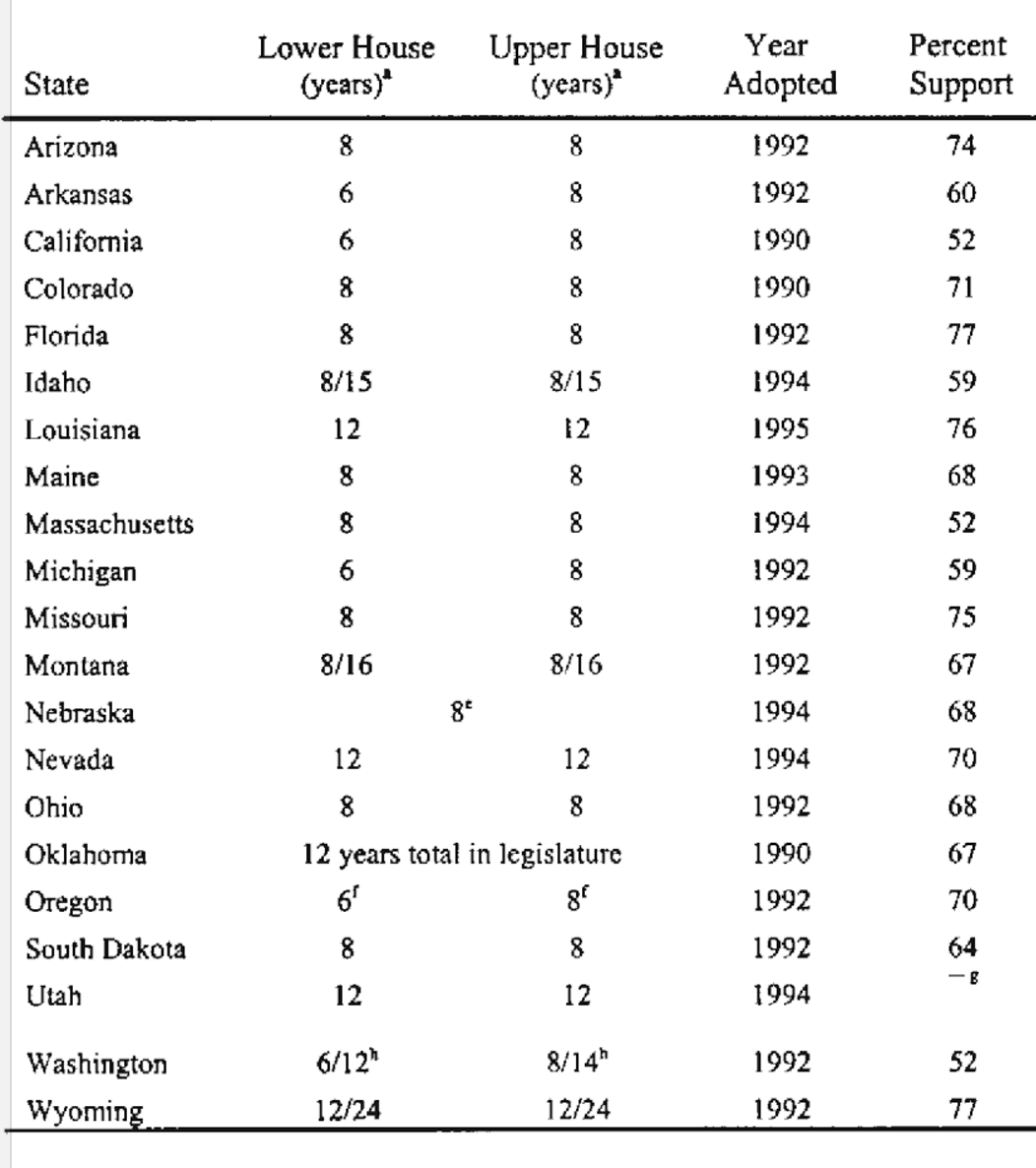
21 US states introduced
term limits for legislators
by referendum in the '90s
Source: Table 1.1 of Carey et al. (2000)
Motivation:
Many people in Africa support
term limits for their president
(surveyed in 2011-2013)
Source: Figure 1 of Dulani (2015)
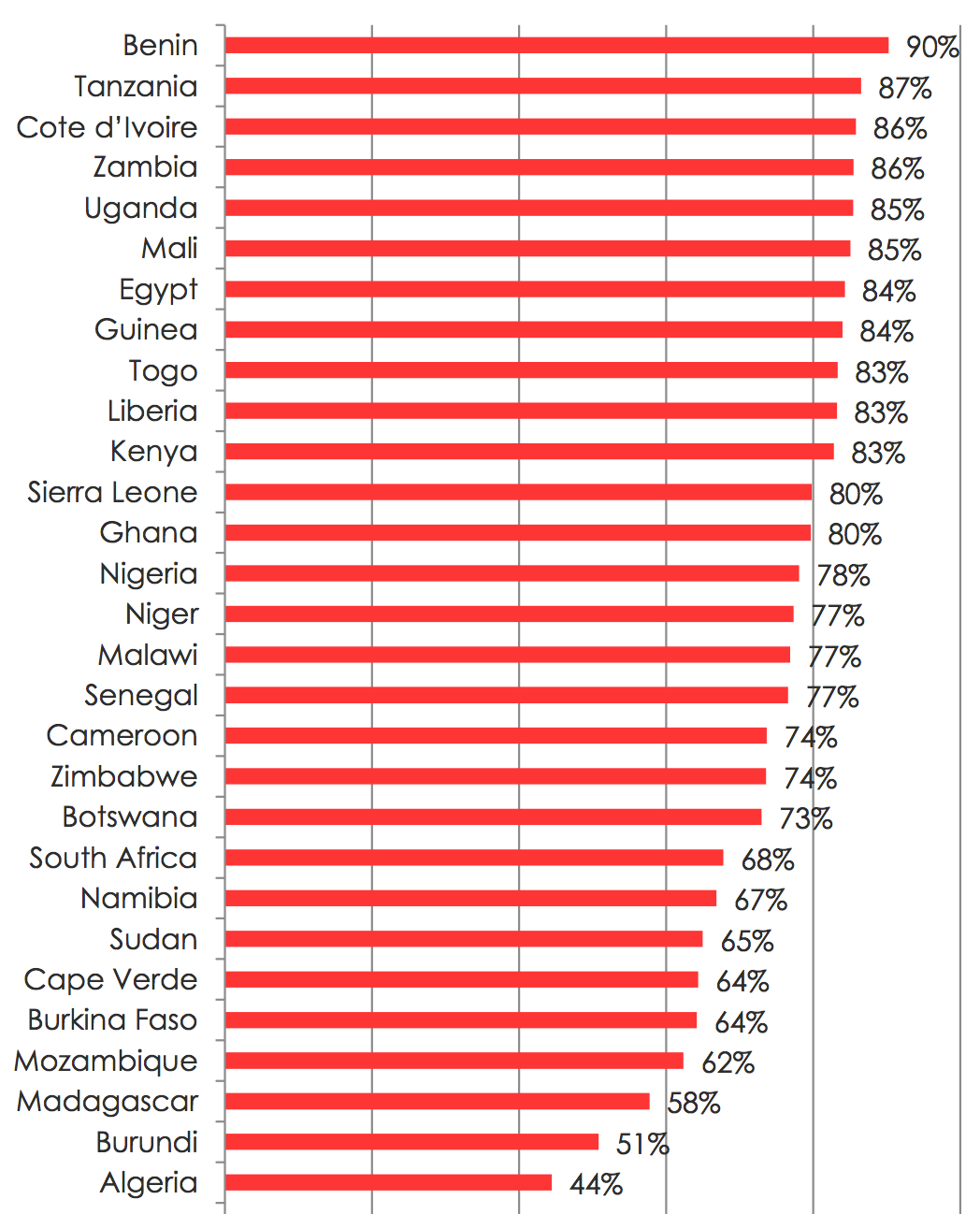
Term limits appear to be popular
Motivation:
Do term limits really benefit citizens?
The political agency model in the last lecture predicts otherwise
We've also seen supporting evidence from Brazil
This lecture extends the political agency model to show...
Term limits allow politicians to pick a good policy
(e.g. environment protection)
under a certain circumstances

Today's Road Map
Impact of Term Limits - Theory
Impact of Media Freedom
Impact of Term Limits - Evidence
Basic idea
For some policies, not every citizen cares about them
e.g. Policies for environment protection
Politicians act on such policies when electoral competition is fierce
Votes from minority groups count in a tight race
If so, term limits reduce such incentives of politicians, leading to:
No environment protection if minority groups are green
Environment protection if minority groups are brown
Model
Model ingredient #1: Players
Citizens
Politicians
Incumbent
(chooses a policy in period 1 and, if re-elected, in period 2)
Opposition candidate
(chooses a policy in period 2 if defeating the incumbent)
A small fraction of citizens only care about environment policy
The rest of citizens: indifferent about environment policy
Two types: Green & Brown
Green
in favour of environment protection
Brown
against environment protection
Model ingredient #1: Players (cont.)
A small fraction of citizens only care about environment policy
Model ingredient #2: Policies
Environment protection
Preferred by some citizens, but not by every citizen
Model ingredient #3: Politician type
Two types: Green & Brown
Green
in favour of environment protection
Brown
against environment protection
Both types want to stay in office (for prestige etc.)
Model ingredient #4: Information
Citizens do not know each politician's type
Expect a politician to be green with probability P
Citizens observe policy choice in period 1
e.g. through mass media
This part of the model is the same as in the previous lecture
Model ingredient #5: Timing of Events
Step 1: Period 1 Policy-making
Step 2: Election
The incumbent chooses a policy
Citizens vote for the incumbent or for the opposition
Step 3: Period 2 Policy-making
Winner of the election chooses a policy
This part of the model is the same as in the previous lecture
Analysis
Term-limited politician's optimization
Green politician
Protect environment
Brown politician
Forget about environment
Green citizens want a green politician to be in office in period 2
Brown citizens want a brown politician to be in office in period 2
Analysis #1
Case 1: Incumbent is popular
Incumbent supporters
Case 2: Opposition is popular
Opposition supporters
Case 3: Neck and neck, with more Green than Brown citizens
Case 4: Neck and neck, with more Brown than Green citizens
Optimization by citizens and period 1 politicians
Analysis
1st-term politician type
Green
Brown
1st-term policy
Protect
Election
Re-elected
Re-elected
2nd-term policy
Protect
Not protect
Not protect
Case 1: Incumbent is popular
Term limit has no impact
1st-term politician type
Green
Brown
1st-term policy
Protect
Election
Kicked out
Kicked out
2nd-term policy
Not protect
Case 2: Opposition is popular
Term limit doesn't bite
Case 1: Incumbent is popular
Incumbent supporters
Case 2: Opposition is popular
Opposition supporters
Case 3: Neck and neck, with more Green than Brown citizens
Case 4: Neck and neck, with more Brown than Green citizens
Optimization by citizens and period 1 politicians
Analysis
A proposed equilibrium
We now see whether the following set of actions
Green politician protects environment in period 1
Brown politician protects environment in period 1
with probability Q
Green citizens vote the incumbent
if and only if environment is protected in period 1
constitutes an equilibrium (i.e. no one benefits from deviation)
Green citizens' optimization at the election
Vote for the candidate who is more likely to be green
Probability of being green
Incumbent
Opposition
Analysis #2
Probability that incumbent is green
Green
Brown
P
1 - P
Citizens' initial belief
Analysis #2 (cont.)
Probability that incumbent is green
Green
Brown
P
1 - P
Citizens' initial belief
Analysis #2 (cont.)
Protect
Incumbent's policy choice (according to the proposed equilibrium)
Q
1 - Q
Protect
Do not protect
Probability that incumbent is green
Green
Brown
P
1 - P
Citizens' initial belief
Analysis #2 (cont.)
Protect
Incumbent's policy choice (according to the proposed equilibrium)
Q
1 - Q
Protect
Do not protect
P
Brown
(1 - P) * Q
If environment is protected...
Green
Vote for the incumbent if environment is protected
Probability of being green
Incumbent
Opposition
P
Brown
(1 - P) * Q
If environment is protected...
Green
Green citizens' optimization at the election
Analysis #2 (cont.)
Probability that incumbent is green
Green
Brown
P
1 - P
Citizens' initial belief
Analysis #2 (cont.)
Protect
Incumbent's policy choice (according to the proposed equilibrium)
Q
1 - Q
Protect
Do not protect
Brown
If environment is NOT protected...
Vote the opposition if environment is NOT protected
Probability of being green
Incumbent
Opposition
Green citizens' optimization at the election
Brown
If environment is NOT protected...
It is indeed optimal for green citizens
to vote the incumbent if and only if environment is protected
Analysis #2 (cont.)
Period 1 green politician's optimization
Protect environment
Get re-elected
& fulfil his/her desire
in both periods
Optimal behaviour: Protect environment
Analysis #3
Not protect environment
Get kicked out
& do not fulfil his/her desire
in either period
Period 1 brown politician's optimization
Protect environment
Get re-elected
& fulfil his/her desire
in period 2 only
Analysis #4
Not protect environment
Get kicked out
& fulfil his/her desire
in period 1 only
Benefit from period 1 policy
Expectedperiod 2 benefit
0
Period 1 brown politician's optimization
Protect environment
Get re-elected
& fulfil his/her desire
in period 2 only
Protect environment
Analysis #4
Not protect environment
Get kicked out
& fulfil his/her desire
in period 1 only
Benefit from period 1 policy
Expectedperiod 2 benefit
0
Not protect environment
Q
1-Q
Optimal behavior
A proposed equilibrium
The following set of actions
Green politician protects environment in period 1
Brown politician protects environment in period 1
with probability Q
Green citizens vote the incumbent
if and only if environment is protected in period 1
is indeed an equilibrium (i.e. no one benefits from deviation)
1st-term politician type
Green
Brown
Cost of pleasing Green citizens
Low
High
1st-term policy
Protect
Not protect
Election
Re-elected
Re-elected
Kicked out
2nd-term policy
Zero
Protect
Protect
Not protect
Case 3: Neck and neck, with more Green than Brown citizens
Term limit discourages environment protection
Case 1: Incumbent is popular
Incumbent supporters
Case 2: Opposition is popular
Opposition supporters
Case 3: Neck and neck, with more Green than Brown citizens
Case 4: Neck and neck, with more Brown than Green citizens
Optimization by citizens and period 1 politicians
Analysis
A proposed equilibrium
We now see whether the following set of actions
Green politician does not protect environment in period 1
with probability Q
Brown politician does not protect environment in period 1
Brown citizens vote the incumbent
if and only if environment is NOT protected in period 1
constitutes an equilibrium (i.e. no one benefits from deviation)
Brown citizens' optimization at the election
Vote for the candidate who is more likely to be brown
Probability of being brown
Incumbent
Opposition
Analysis #5
Probability that incumbent is brown
Green
Brown
P
1 - P
Citizens' initial belief
Analysis #5 (cont.)
Probability that incumbent is brown
Green
Brown
P
1 - P
Citizens' initial belief
Analysis #5 (cont.)
Protect
Incumbent's policy choice (according to the proposed equilibrium)
Q
1 - Q
Do not protect
Do not protect
Probability that incumbent is brown
Green
Brown
P
1 - P
Citizens' initial belief
Analysis #5 (cont.)
Protect
Incumbent's policy choice (according to the proposed equilibrium)
Q
1 - Q
Do not protect
Do not protect
If environment is protected...
Green
Vote the opposition if environment is protected
Probability of being brown
Incumbent
Opposition
Brown citizens' optimization at the election
Analysis #5 (cont.)
If environment is protected...
Green
Probability that incumbent is brown
Green
Brown
P
1 - P
Citizens' initial belief
Analysis #5 (cont.)
Protect
Incumbent's policy choice (according to the proposed equilibrium)
Q
1 - Q
Do not protect
Do not protect
If environment is NOT protected...
Green
P*Q
Brown
(1 - P)
Vote the incumbent if environment is not protected
Probability of being brown
Incumbent
Opposition
Brown citizens' optimization at the election
Analysis #5 (cont.)
If environment is NOT protected...
Green
P*Q
Brown
(1 - P)
It is indeed optimal for brown citizens to vote the incumbent
if and only if environment is NOT protected
Period 1 brown politician's optimization
Protect environment
Get kicked out
& do not fulfil his/her desire
in either period
Optimal behaviour: NOT protect environment
Analysis #6
Not protect environment
Get re-elected
& fulfil his/her desire
in both periods
Period 1 green politician's optimization
Protect environment
Get kicked out
& fulfil his/her desire
in period 1 only
Analysis #7
Not protect environment
Get re-elected
& fulfil his/her desire
in period 2 only
Benefit from period 1 policy
Expectedperiod 2 benefit
0
Period 1 green politician's optimization
Protect environment
Get kicked out
& fulfil his/her desire
in period 1 only
Analysis #7
Not protect environment
Get re-elected
& fulfil his/her desire
in period 2 only
Not protect environment
Protect environment
Q
1-Q
Optimal behavior
Benefit from period 1 policy
Expectedperiod 2 benefit
0
1st-term politician type
Green
Brown
Cost of pleasing Brown citizens
High
Zero
1st-term policy
Not Protect
Not protect
Election
Re-elected
Re-elected
Kicked out
2nd-term policy
Low
Protect
Protect
Not protect
Case 4: Neck and neck, with more Brown than Green citizens
Term limit encourages environment protection
Summary (Predictions to be tested)
1
2
3
Term limit has no impact on environment policy
when the incumbent or the opposition is popular
Term limit discourages environment policy
when electoral competition is intense
and a minority of citizens are green
Term limit encourages environment policy
when electoral competition is intense
and a minority of citizens are brown
Implications
It's NOT necessarily desirable
to make policy-maker responsive to voters
Elections backfire when
policy-makers have a better idea of desirable policies for society
To seek re-election, policy-makers will choose
a policy that voters believe is correct.
e.g. Green politician vs Brown citizens
e.g. Green politician doesn't protect environment to be re-elected

Today's Road Map
Impact of Term Limits - Theory
Impact of Media Freedom
Impact of Term Limits - Evidence
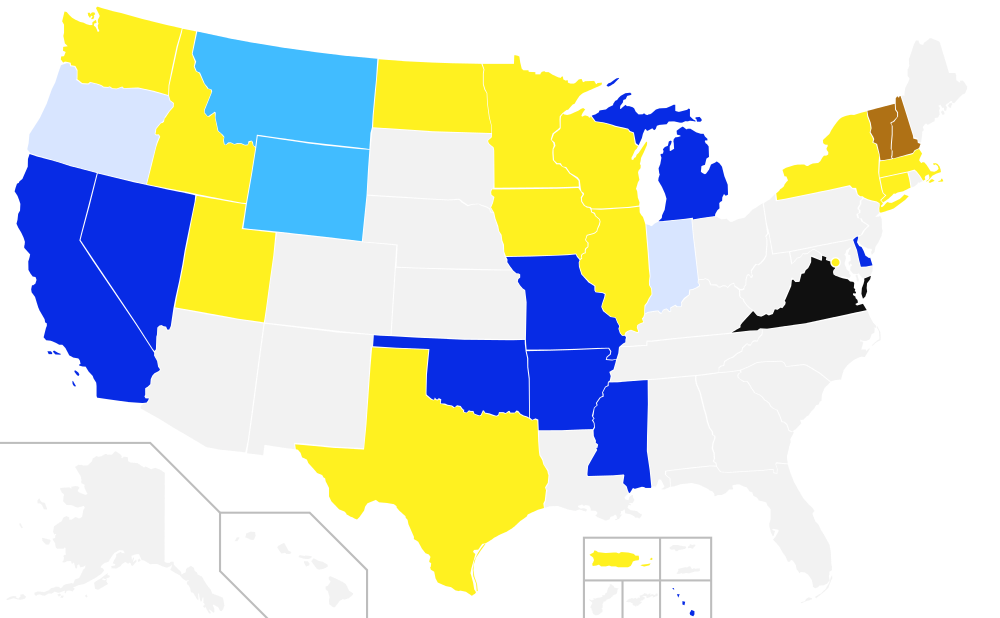
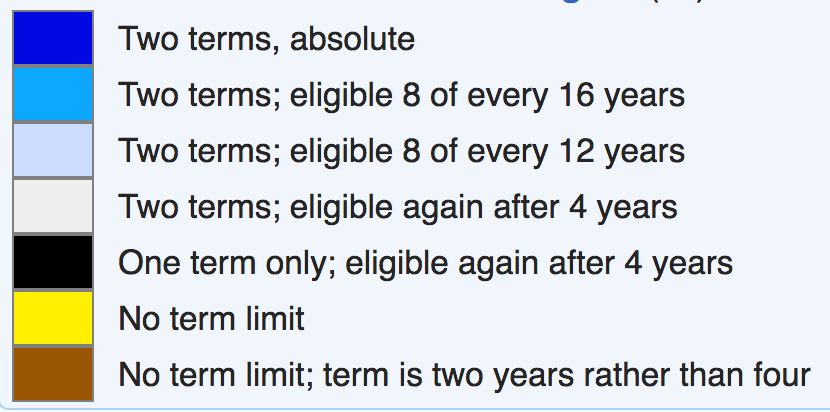
Testing ground: US governors
About half of the 50 US states have term limits on their governors
Image source: en.wikipedia.org/wiki/Term_limits_in_the_United_States
Measurement
Environment policy
Annual per capita state govt expenditure (1970-2000)
on fish & game, forests & parks, and other natural resources
Account for 1.8% of total state expenditure
Source: List and Sturm (2006), pp. 1261-62
% of Green citizens
Members of 3 largest environment groups in 1987:
Greenpeace, Sierra Club, National Wildlife Federation
(as % of state population)
Minimum 0.25% (Missisippi) / Maximum 2% (Vermont)
Naive way to estimate the impact of term limits
1. Take a US state with term limits
e.g. California (term limits introduced in 1990)

Image source: en.wikipedia.org/wiki/California
Naive way to estimate the impact of term limits
2. Compare policies during:
Years with
governor
term-limited
Years with
governor
not term-limited
vs
Example: Arnold Schwarzenegger
1st term
(2003-2006)
2nd term
(2007-2010)
vs
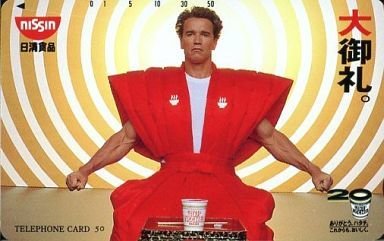
Image source: www.suruga-ya.jp/database/pics/game/979003228.jpg
Naive way to estimate the impact of term limits
2. Compare policies during:
Years with
governor
term-limited
Years with
governor
not term-limited
vs
May be different also in US-wide policy trend
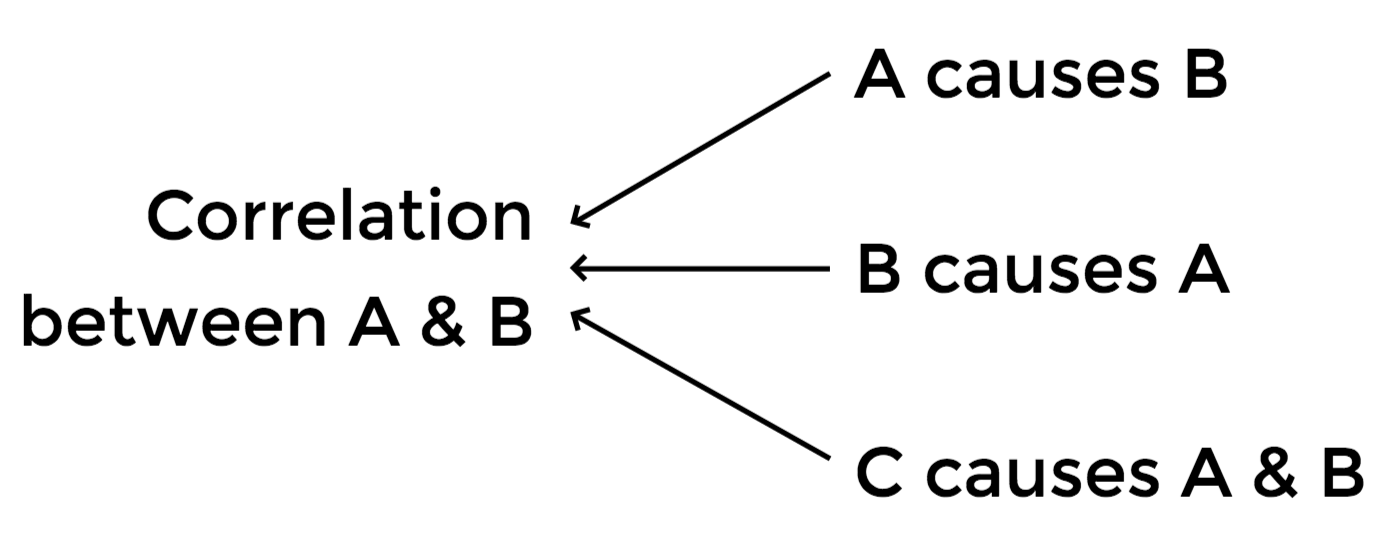
The endogeneity concern
crops up
Naive way to estimate the impact of term limits
2. Compare policies during:
Years with
governor
term-limited
Years with
governor
not term-limited
vs
Example: Arnold Schwarzenegger
1st term
(2003-2006)
2nd term
(2007-2010)
vs

Image source: www.suruga-ya.jp/database/pics/game/979003228.jpg
Great Recession since 2008
Better way to estimate the impact of term limits
Compare to the difference in states without term limits
Arnold
Schwarzenegger
in California
2nd term
(2007-2010)
vs
1st term
(2003-2006)
Rick Perry in Texas
in office 2000-2015
2007-2010
2003-2006
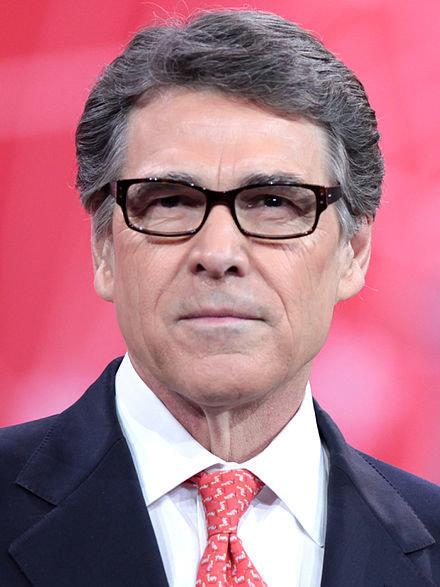
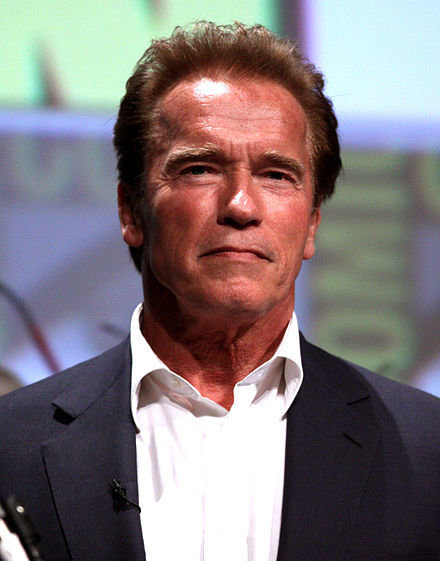
vs
Better way to estimate the impact of term limits
Arnold
Schwarzenegger
in California
2nd term
(2007-2010)
vs
1st term
(2003-2006)
Rick Perry in Texas
in office 2000-2015
2007-2010
2003-2006


vs
vs
Compare to the difference in states without term limits
Empirical strategy: Difference-in-differences
Compare states with / without term limits
| Years with governor term-limited |
Years with governor not term-limited |
|
| States with term limits |
||
| States without term limits |
Impact of term limit
= (A - B) - (C - D)
A
B
C
D
Recap of predictions to be tested
1
2
3
Term limit has no impact on environment policy
when the incumbent or the opposition is popular
Term limit discourages environment policy
when electoral competition is intense
and a minority of citizens are green
Term limit encourages environment policy
when electoral competition is intense
and a minority of citizens are brown
Impact of term limits on environment spending
Source: List and Sturm (2006), p. 1267
Any states with large incumbent's vote share
1st-term
spending
2nd-term
spending
=
Impact of term limits on environment spending
Source: List and Sturm (2006), p. 1267
by 20% of average spending
Green states with incumbent's vote share closed to 50%
1st-term
spending
2nd-term
spending
>
Impact of term limits on environment spending
Source: List and Sturm (2006), p. 1267
by 9.2% of average spending
Brown states with incumbent's vote share closed to 50%
1st-term
spending
2nd-term
spending
<
Implications: Pro and Con of Term Limits
When citizens know which policy is bad (e.g. corruption)
Term limits allow politicians
to choose bad policy
When citizens DO NOT know which policy is bad (e.g. brown citizens)
Term limits allow well-informed politicians (e.g. green politicians)
not to choose what citizens believe is good

Today's Road Map
Impact of Term Limits - Theory
Impact of Media Freedom
Impact of Term Limits - Evidence
The impact of press freedom
within the framework of the political agency model
Citizens observe
incumbent's performance
before election
Better-than-expected
performance
Re-election
of incumbent
Incumbent delivers
what citizens need
Press Freedom
Testing ground: India's famine/disaster relief
State governments in India
are responsible for
Distribution of foods, drinking water, medicine, clothes, housing
Repairing damaged properties
Monitoring food production and impending disasters
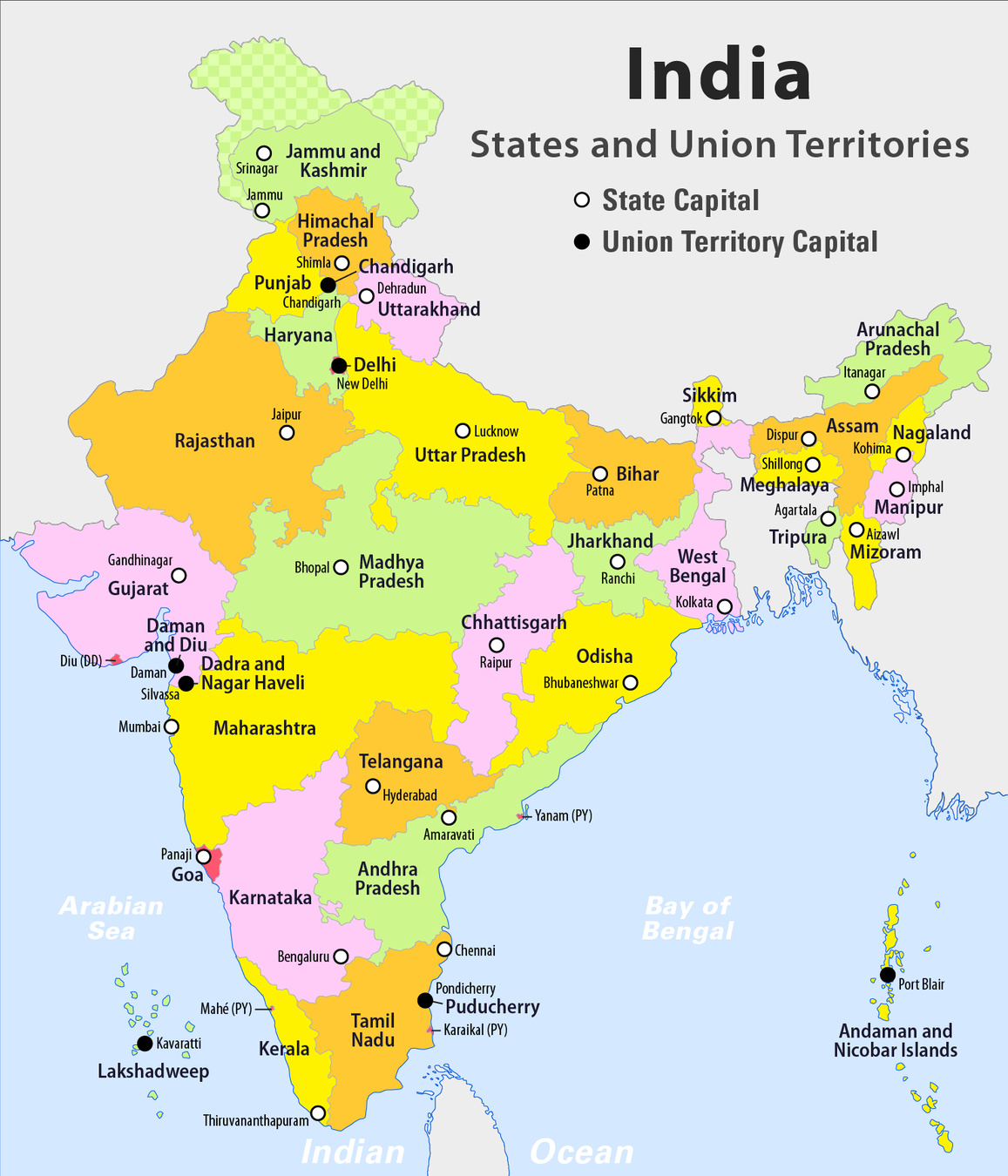
Theoretical predictions
Political Agency Model predicts:
More media penetration
More relief provided by state government
When famine/disaster strikes
Measurement
When famine/disaster strikes
More media penetration
More relief provided by state government
grain production
flood damage
newspaper circulation per capita
Food distribution
Relief expenditure
Findings from annual data for 1958-1992
10% drop in grain production
Food distribution is increased by
in states with median
newspaper circulation
in states with 75 percentile
newspaper circulation
1.0%
2.3%
Similar result for relief expenditure in response to flooding
Implications
Press freedom is key to make the government accountable
for issues such as disaster relief and corruption
So this world map
is really worrisome
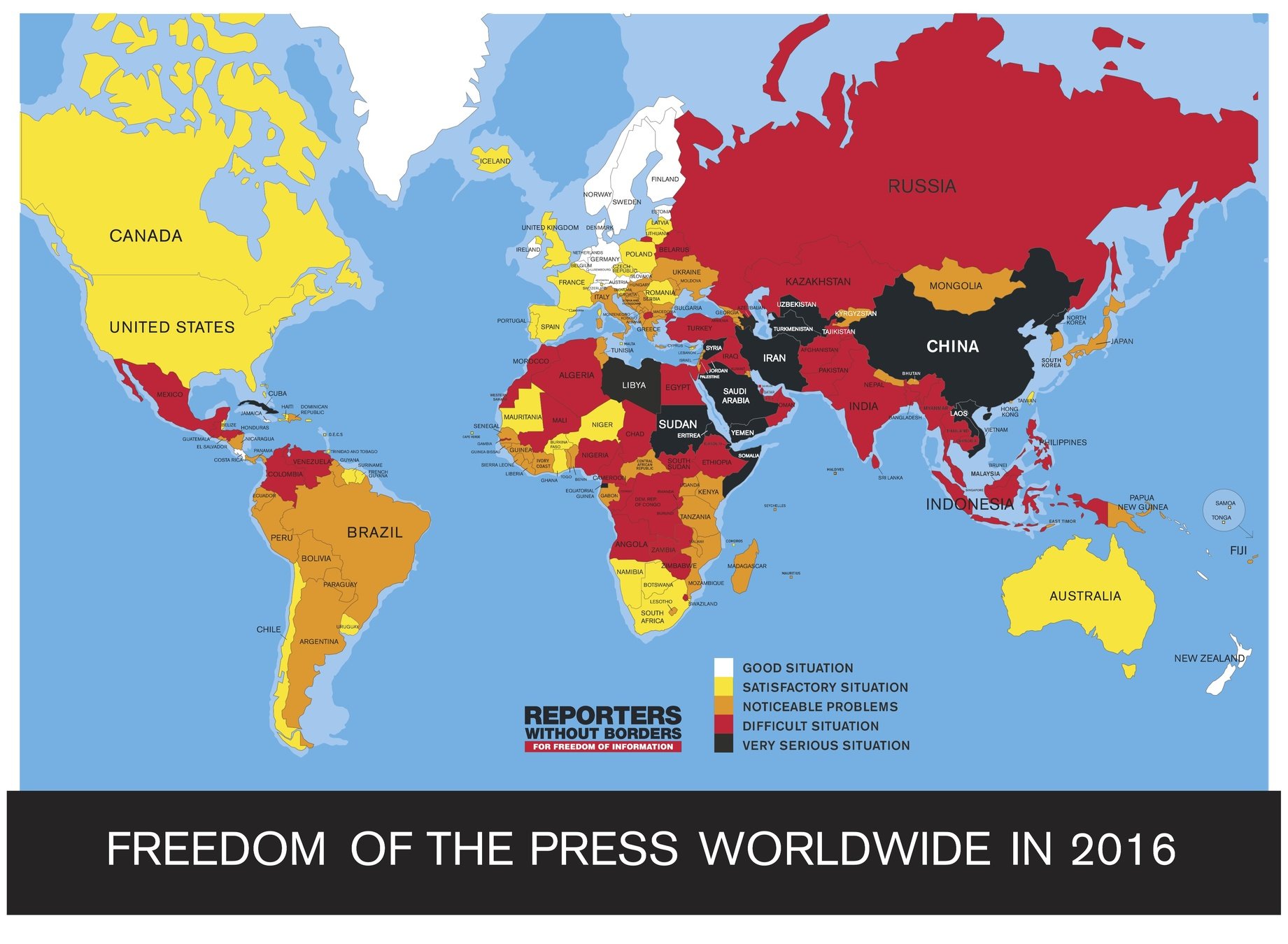
Image source: rsf.org/sites/default/files/carte_en__0.jpg
Next lecture...
Voter Turnout

This lecture is based on the following academic articles:
List, J. A., and D. M. Sturm. 2006. “How Elections Matter: Theory and Evidence from Environmental Policy.” Quarterly Journal of Economics 121(4): 1249–81.
Besley, T., and R. Burgess. 2002. “The Political Economy of Government Responsiveness: Theory and Evidence from India.” Quarterly Journal of Economics 117(4): 1415–51.
Politics through the Lens of Economics (2017): Lecture 11 Term Limit and Media Freedom
By Masayuki Kudamatsu
Politics through the Lens of Economics (2017): Lecture 11 Term Limit and Media Freedom
- 2,998



